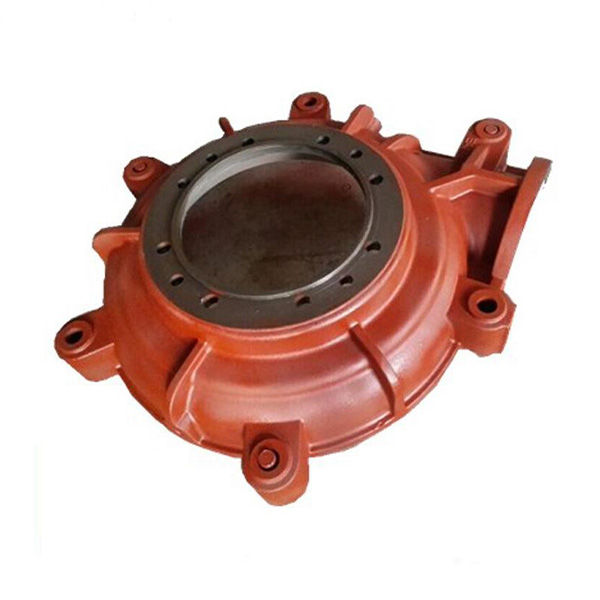Mobile:+86-311-808-126-83
Email:info@ydcastings.com
Types and Functions of Blower Impellers for Enhanced Airflow Performance
Understanding Blower Impeller Types A Comprehensive Overview
Blowers are essential devices in various industrial and commercial applications, used to move air and gases from one location to another. The efficiency and performance of a blower largely depend on its impeller design. The impeller is the rotating component that imparts kinetic energy to the air or gas, converting this energy into pressure. There are several types of blower impellers, each with unique characteristics and applications. In this article, we will explore the main types of blower impellers, their advantages, and their suitable applications.
1. Centrifugal Impellers
Centrifugal impellers are one of the most common types used in blowers. They operate based on the centrifugal force principle, where the rotating blades accelerate the air or gas outward from the center. This design results in a significant increase in pressure and is ideal for applications requiring high flow rates and moderate pressure.
Advantages - High efficiency in moving large volumes of air. - Compact design, making them suitable for limited spaces. - Robust construction, which ensures durability and longevity.
Applications Centrifugal blowers are widely used in HVAC systems, pneumatic conveying, dust collection, and cooling systems in various industries.
2. Positive Displacement Impellers
Positive displacement impellers include two primary types rotary lobe and rotary screw impellers. These impellers work by trapping a fixed volume of air or gas and then displacing it through the outlet. This type of blower is known for providing consistent flow regardless of pressure changes.
Advantages - Capable of generating high pressures with relatively low horsepower. - Excellent for applications requiring constant flow rates under varying conditions. - Less sensitive to changes in system pressure compared to centrifugal impellers.
Applications Commonly found in applications like vacuum pumps, wastewater treatment, and industrial processing, positive displacement blowers are essential in scenarios where precise air delivery is crucial.
3. Axial Flow Impellers
blower impeller types

Axial flow impellers move air or gas in a direction parallel to the impeller shaft. This design allows for a more streamlined flow, which is beneficial in specific applications. Axial flow fans are typically used in high-flow, low-pressure applications.
Advantages - Extremely efficient at moving large volumes of air with minimal energy loss. - Reduced turbulence and noise, making them suitable for indoor environments. - Compact in design, allowing for easier installation in various setups.
Applications These impellers are often used in ventilation systems, cooling applications, and as exhaust systems in various industrial processes.
4. Mixed Flow Impellers
Mixed flow impellers combine features of both centrifugal and axial designs. They can produce moderate pressure and flow rates, making them versatile in various applications. The unique design allows air to be moved both radially and axially.
Advantages - Balanced performance in terms of flow and pressure capabilities. - Versatile enough for a wide range of applications. - Efficient in providing airflow in both high-pressure and low-pressure scenarios.
Applications Mixed flow impellers are ideal for applications requiring a balance of airflow and pressure, such as air conditioning systems, drying applications, and in certain industrial machinery.
Conclusion
Selecting the appropriate blower impeller type is crucial for optimizing performance in any application. As we have seen, each type of impeller offers distinct advantages and is tailored for specific operational requirements. Centrifugal impellers are best for high-flow situations, while positive displacement impellers excel in precise airflow applications. Axial flow impellers are efficient for low-pressure, high-volume needs, and mixed flow impellers provide a balanced solution combining both characteristics.
Understanding the unique features of these different impeller types is vital for engineers and system designers to ensure the most efficient and effective use of blower systems in their respective fields. As technology advances, we can expect further innovations in blower designs, enhancing their efficiency and broadening their applications across various industries.
-
Understanding Metal Casting TechniquesNewsApr.02,2025
-
Understanding Exhaust Manifolds for Enhanced Engine PerformanceNewsApr.02,2025
-
The World of Metal FabricationNewsApr.02,2025
-
Key Components for Pump and Turbo EfficiencyNewsApr.02,2025
-
Essential Tools for Automotive Maintenance and RepairNewsApr.02,2025
-
Durable Valve Components for Effective Water ManagementNewsApr.02,2025











